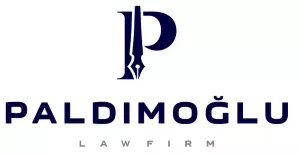Literally meaning "arrangement of bankruptcy", a concordat is a unique enforcement mechanism under Turkish law, whereby a debtor who is unable to pay their debts or is at risk of being unable to do so at maturity, may enter into a restructuring plan with creditors—provided that the statutory conditions are met. The objective of the concordat is to either ensure payment of such debts or to allow the debtor to avoid imminent bankruptcy. The proposed restructuring plan may involve extending payment deadlines, reducing the amount of debt, or both. In this article, we will define what a concordat is, examine the legal requirements for initiating the process, outline the main procedural stages, and address some of the frequently asked questions.
Definition of Concordat
Derived from the Italian term for "agreed bankruptcy," the concordat is a legal remedy regulated under the Turkish Enforcement and Bankruptcy Law. It allows a debtor to restructure debts that are either already due and unpaid, or are not yet due but face a high risk of default. Through this mechanism, the debtor may enter into an agreement with creditors for either a partial reduction of debt amounts or an extension of payment deadlines under a proposed plan. A concordat application may be filed either before or after a formal bankruptcy declaration.
Legal Requirements for Filing a Concordat
In order for a concordat request to be valid and judicially confirmed, certain conditions must be satisfied. Generally speaking, the process requires the debtor to be in financial distress, a formal application for concordat to be submitted, an agreement to be reached with the creditors, the granting of a temporary respite period (müddet), appointment of a court-appointed commissioner, a positive evaluation of the proposal, and finally, court approval of the concordat.
A natural or legal person is considered in financial distress if they are unable to pay their debts on their due dates. In such cases, creditors are generally unable to collect on their claims.
A concordat proposal may be filed either by the debtor or by a creditor who is entitled to file for the debtor's bankruptcy. If the debtor is subject to bankruptcy, the application must be filed with the Commercial Court of First Instance at the debtor's principal place of business. If not, the application is filed at the court with jurisdiction over the debtor's place of residence. The application must be accompanied by supporting documents as required by the Enforcement and Bankruptcy Law.
The debtor or creditor making the application submits a restructuring proposal to the other party. This proposal may include debt reductions or deferred payment terms. If a qualified majority of creditors agrees to the terms of the concordat plan, the concordat process can commence. It is important to note that approval from a qualified majority of creditors is a legal prerequisite for proceeding.
The court reviewing the application must be convinced that the debtor is acting in good faith in submitting the concordat proposal. Even if the parties reach an agreement, the plan cannot proceed unless the court confirms the debtor's bona fides.
To supervise the process during the granted temporary respite period, the court appoints a concordat commissioner. This commissioner is responsible for assessing whether the restructuring plan has a reasonable chance of success.
Throughout the process, the debtor is obligated to take measures to preserve their assets and must refrain from undertaking any transactions not authorized by the concordat commissioner.
Lastly, the concordat plan—once agreed upon by the parties—must be formally approved by the court. Such approval is contingent upon the payment of court fees and other litigation costs. If any privileged creditors demand collateral for their claims, the required collateral must also be deposited with the court. Failure to comply with these formalities may result in procedural dismissal of the request for approval.
How Is Concordat Announced?
If the court is convinced that the concordat plan is likely to succeed, the plan is approved. Once ratified, the concordat decision is publicly announced in accordance with the procedures set forth in the Enforcement and Bankruptcy Law. The decision is published in the Trade Registry Gazette and on the official announcement portal of the Press Advertisement Agency. It is also notified to various public authorities and institutions including the land registry office, trade registry office, customs and postal administrations, tax office, the Banks Association of Turkey, the Participation Banks Association of Turkey, local chambers of commerce and industry, securities exchanges, the Capital Markets Board, and any other relevant authority or institution.
How to Find Out Which Companies Have Declared Concordat
A concordat is a legal restructuring remedy whereby a debtor company facing financial distress agrees with its creditors to restructure its debts. In the Turkish legal system, companies that have been granted concordat are first announced in the trade registry. Such decisions are also published in the venues specified in the Enforcement and Bankruptcy Law. In addition, current developments about companies that have declared concordat may be accessed through certain media sources or financial reports.
Another method of accessing this information is through online platforms. With the advancement of technology, there are now digital platforms that list and update companies that have declared concordat.
Debt Collection from a Company That Has Declared Concordat
To collect a receivable from a company under concordat, the debtor must comply with the approved payment plan. As a rule, enforcement proceedings are stayed during the concordat period, except for limited exceptions. However, if the debtor fails to comply with the payment plan, creditors may request termination of the concordat. If the court grants termination, enforcement proceedings may be resumed.
To ensure proper collection, the concordat commissioner prepares an inventory of the debtor's assets and conducts a valuation. Payments are made in accordance with the ranking of claims, giving priority to secured and privileged creditors.
Creditors may apply to the court to enforce their claims. Payments are collected in installments in accordance with the approved plan.
Stages of the Concordat Process
Once the debtor or a creditor entitled to request bankruptcy files a concordat proposal and the application phase is completed, the process follows several distinct stages: (i) temporary moratorium, (ii) definitive moratorium, (iii) creditors' meeting, and (iv) court approval.
The temporary moratorium order granted by the court functions as a protective measure. During this period, the debtor's assets are protected, enforcement proceedings are suspended, and new proceedings cannot be initiated. The debtor may not establish pledges, act as a guarantor, or engage in any transactions that may diminish the value of the estate without the commissioner's approval. Limitation and forfeiture periods are also suspended. Upon issuing the temporary moratorium, the court appoints a concordat commissioner to assess whether the proposed plan has a reasonable prospect of success. The temporary moratorium is initially granted for 3 months and may be extended for an additional 2 months upon request.
For the court to issue a definitive moratorium, a hearing is scheduled, and both the debtor and any creditor who submitted the concordat request are summoned. Before the hearing, the court evaluates the commissioner's report along with the parties' statements and any objections raised by creditors. If the court finds that the plan is viable, it grants a definitive moratorium of up to 1 year, which may be extended for an additional 6 months under exceptional circumstances. The decision is announced according to the legal procedures.
After a definitive moratorium is granted, a creditors' committee consisting of no more than seven representatives may be formed to represent the interests of creditors. The committee convenes monthly to make decisions regarding the process, with the participation of the commissioner, who documents these decisions.
If the debtor's financial position improves during the definitive moratorium, this must be documented in a written report by the commissioner and submitted to the court. If the court determines that the debtor has regained financial stability, it may reject the concordat request without waiting for the process to conclude. This is because one of the essential conditions for ratifying a concordat is the existence of financial distress. If the concordat request is rejected and the debtor is subject to bankruptcy, the court will render a bankruptcy decision ex officio.
What Happens When the Concordat Period Ends?
At the end of the definitive moratorium period provided by law, the court renders a decision either to approve or reject the concordat. If the necessary conditions for approval are met, the court confirms the concordat plan. However, if those conditions are not satisfied, the court rejects the request. In such case, if the debtor is subject to bankruptcy, the court declares bankruptcy. If not, the protective measures granted under the concordat cease to apply, and any suspended enforcement proceedings resume. The rejection decision may be challenged through legal remedies.
Frequently Asked Questions
What is concordat in finance?
Concordat is a judicial debt restructuring mechanism that allows an individual or company in financial distress to reach an agreement with creditors under a court-supervised plan, in order to avoid bankruptcy or settle outstanding debts.
What is a concardat agreement?
Once a concordat is declared, it is officially recognized that the debtor is facing financial difficulties and intends to restructure their debts. The concordat plan becomes binding on creditors, and legal protections are granted, including a stay on enforcement proceedings.
What is concardat in Turkey?
Declaring concordat indicates that a debtor in Turkey is unable to pay debts or is at risk of bankruptcy, and therefore seeks to restructure debts by negotiating reduced amounts or extended payment terms.
Why is concordat declared?
Concordat aims to offer a constructive solution to debtors who wish to continue operating despite being unable to pay their debts. It allows the debtor to reach an agreement with creditors in order to avoid insolvency and maintain business continuity.
Who cannot declare concordat?
Debtors who are financially capable of paying their debts are not eligible to apply for concordat. Furthermore, according to Law No. 6183, taxpayers cannot request concordat solely for restructuring tax debts.
What is the maximum duration of concordat?
Under the Enforcement and Bankruptcy Law, the temporary moratorium may last up to 5 months, and the definitive moratorium up to 18 months. Therefore, the total duration of the concordat process can be up to 23 months.
Conclusion
Concordat is a legal alternative to bankruptcy, designed for debtors in financial distress who intend to continue their operations. Governed by the Enforcement and Bankruptcy Law No. 2004, it enables the debtor to restructure debts through a court-approved agreement with creditors. During the process, debtors benefit from protection periods that shield assets and suspend enforcement actions, providing a window for economic recovery.
However, initiating a concordat is not a simple administrative procedure—it entails a complex legal process involving financial assessments, qualified majority approval by creditors, court supervision, and oversight by a court-appointed commissioner. Each step must be handled with care and legal guidance. Therefore, professional legal support is essential both before and throughout the process to ensure a successful outcome.
Filing for concordat is not a sign of weakness; when properly managed, it serves as a constructive restructuring tool for both debtors and creditors. Especially in times of economic volatility, concordat has become one of the key legal mechanisms for maintaining business sustainability.
The content of this article is intended to provide a general guide to the subject matter. Specialist advice should be sought about your specific circumstances.


